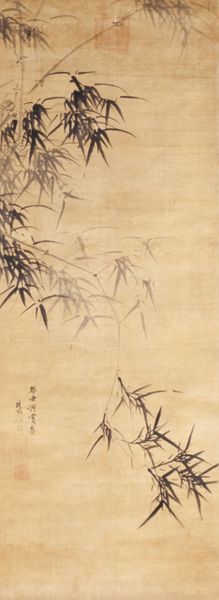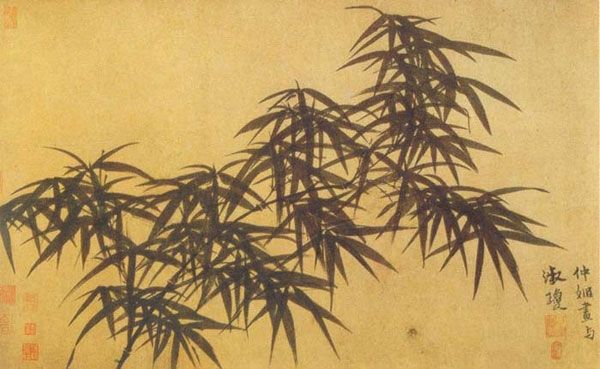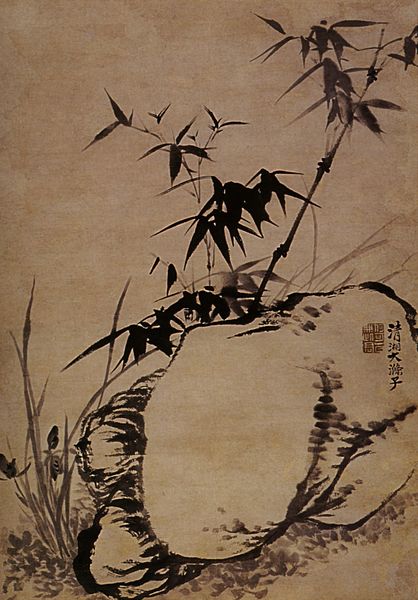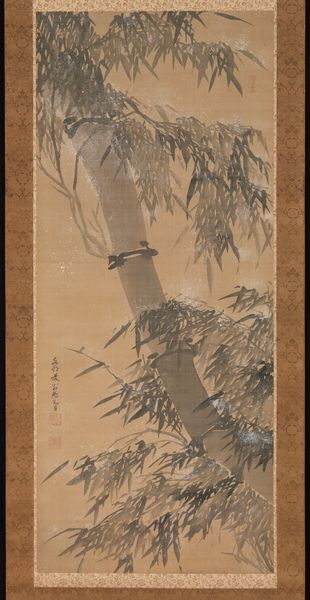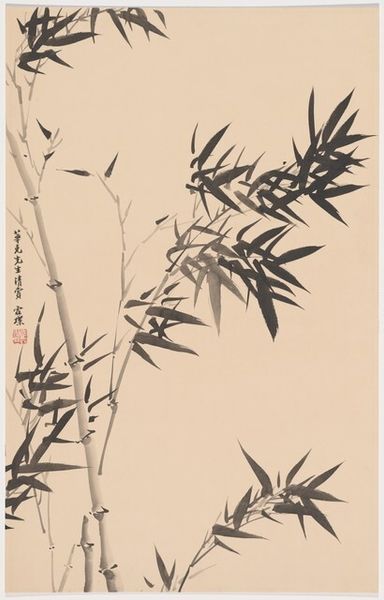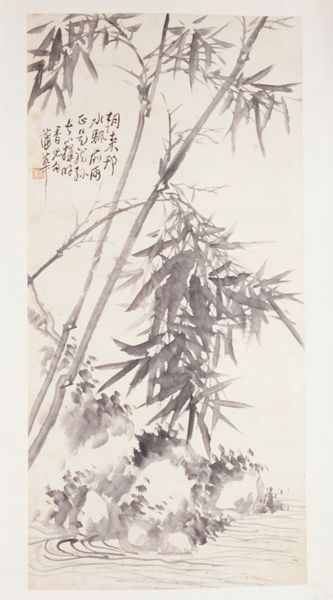
painting, hanging-scroll, ink
#
ink painting
#
painting
#
asian-art
#
landscape
#
japan
#
hanging-scroll
#
ink
#
orientalism
Dimensions: 42 3/16 × 15 3/4 in. (107.16 × 40.01 cm) (image)71 1/4 × 21 3/4 in. (180.98 × 55.25 cm) (mount, without roller)
Copyright: Public Domain
Curator: Here we have "Bamboo and Rock," an ink painting hanging scroll believed to be created in the 19th century by Yamamoto Baiitsu. It's part of the Minneapolis Institute of Art's collection. Editor: The monochromatic palette is so restrained. It almost feels like a whisper—subtle variations in tone and line creating a sense of stillness. Curator: That stillness reflects the deeper symbolism. In East Asian art, bamboo represents resilience and flexibility, virtues prized particularly during times of political and social upheaval. Its ability to bend without breaking mirrors the adaptability of the virtuous person. And the rock provides a grounding contrast... Editor: Indeed. The rock, solid and unchanging, a beautiful counterpoint. It offers such a complex, craggy texture, built with layered brushstrokes, that stands in direct opposition to the linearity of the bamboo stalks. The artist's engagement with positive and negative space gives this the impact of a lesson in design as much as landscape. Curator: Right, and considering Baiitsu's background, this piece speaks volumes. He was known not just for his art, but also for his Confucian ideals and adherence to traditional values during a period of significant Western influence in Japan. This scene of natural harmony can be interpreted as a subtle assertion of cultural identity and philosophical belief. Editor: It's remarkable how the artist was able to create a microcosm of the natural world using such economy. And the textural variations achieved within such a restricted palette showcase how a single color can hold so much expressive potential. Look how light seems to filter through the bamboo. Curator: Exactly. The work is, in essence, a visual poem about the virtues of perseverance and integrity, and Baiitsu subtly encoded this perspective into the very fiber of the artwork itself. Editor: Analyzing its structural balance and ink quality reveals so much depth that goes far beyond a representational objective. The artist imbued his mark making with intentional meaning, thus imbuing this piece with more than just artistry. Curator: Thank you. I think exploring these perspectives brings new understanding. Editor: Yes, it enriches my interpretation and gives me renewed appreciation for the power of visual elements.
Comments
minneapolisinstituteofart almost 2 years ago
⋮
Yamamoto Baiitsu is best known for his large-scale paintings of birds and flowers, characterized by delicate brushwork. However, this painting is typical of Baiitsu’s work in the style of Chinese scholar-painters: a clump of bamboo painted with a wet inky brush, behind a rough rock rendered with a much drier brush. In his youth, Baiitsu learned a number of different painting styles from artists in his native Nagoya before earning the patronage of a local merchant and collector of old Chinese paintings and calligraphy. This relationship gave Baiitsu access to Chinese paintings he could copy and painting manuals he could use to study ink and brush techniques. With the death of his patron in 1802, Baiitsu headed to Edo (modern-day Tokyo) and Kyoto, where he eventually rose to prominence in the cities’ literati painting circles.
Join the conversation
Join millions of artists and users on Artera today and experience the ultimate creative platform.


